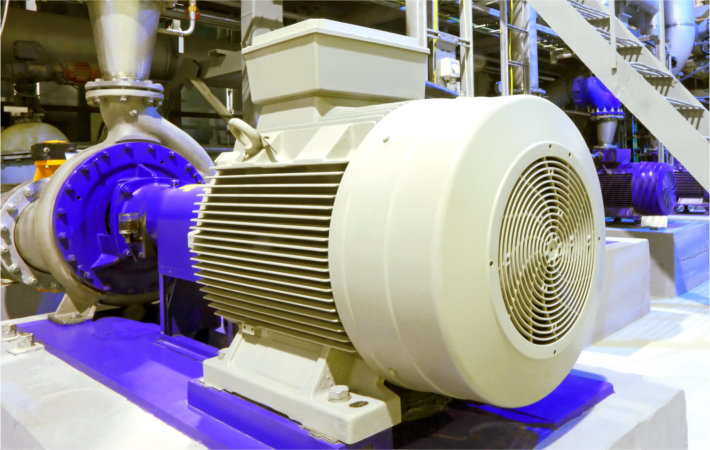 |
Electric Motors
Electric motors are the most common form of prime movers in the industrial world. They are used to rotate impellers of many kinds of mechanical devices such as pumps and compressors. An electric motor receives electric energy and converts it into mechanical energy – which is transferred to the user by the rotor. An electric motor consists of a stator and a rotor - stator is the stationary part which houses a rotor, rotates inside the stator.
How does an electric motor work? Let’s try to answer this question in a very simplistic form. In our earlier discussion we learned the following key pieces of information:
a. Magnets generate a magnetic field around them.
b. When two magnets (along with their magnetic fields) come in close proximity to each other, a force of attraction or repulsion is generated.
The principles noted above are used in design of electric motors. The motor stator and rotor are provided with coiled and other types of conductors. The stator and the rotor conductors are provided with electric currents - these electric currents generate magnetic fields in the rotor and the stator. These magnetic fields interact with each other and a force of repulsion is created. This force causes the rotor to move. This is how we cause rotation in the rotor of an electric motor.
The figure provided here illustrates an induction motor connected to a centrifugal pump. a squirrel-cage induction motor. In later sections we will discuss induction motors in more details - but, for now you can note the stator and the rotor. You can easily notice the stator windings. In the squirrel cage design, rotor is not provided with windings made up of coild wires, instead, large metallic conductors are used to create cage-like structure. Since the cage is made of conducting metal - it is a good conductor and creates a magnetic field for the rotor. In the graphic provided here the smooth rotor is actually metallic construction similar to a cage.he rotor and stator of an electric motor. The stator represents the component that is mounted on the motor body and does not move. The rotor, on the other hand, is mounted on the shaft and rotates within the stator.